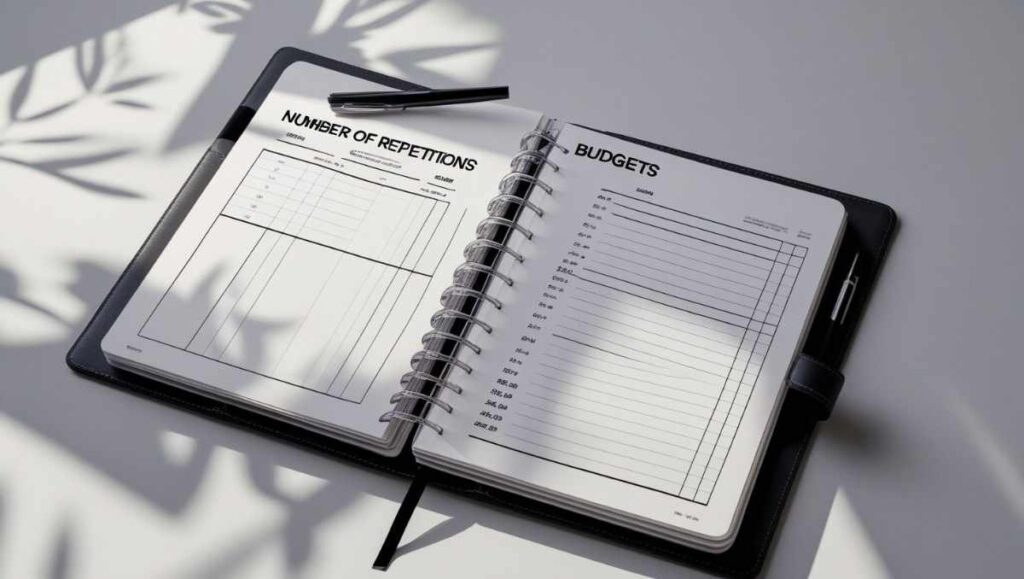
Budgeting is often seen as the cornerstone of sound financial management—whether in small businesses, large enterprises, non-profits, or even household finances. It serves as a roadmap, outlining where resources should be allocated, what priorities are in place, and what financial goals are being pursued. But here’s the catch: creating a budget is only half the journey. If you stop at just setting up a budget, you’re essentially flying blind. What matters just as much—if not more—is how well you track, assess, and refine that budget over time.
So, how do you actually measure your budget’s performance? How can you tell if it’s doing what it’s supposed to do or if you’re drifting off-course?
This article will walk you through five practical and insightful indicators that can help you evaluate the effectiveness of your budget. These indicators not only highlight performance but also offer opportunities for refinement and continuous improvement. By the end of this guide, you’ll have a deeper understanding of how to optimize your budgeting process for long-term success.
1. Comparing Actual Results to Budgeted Figures: The Starting Point for Insight

One of the most basic yet powerful tools for measuring budget performance is the “Actual vs. Budget” comparison. This involves taking the numbers you planned for—revenues, expenses, profits—and comparing them to what actually happened during a given period.
Let’s say your marketing department budgeted $20,000 for advertising in Q1 but ended up spending $25,000. At first glance, that’s a $5,000 overrun. But the number alone doesn’t tell the full story. Did the additional spend bring in more leads and result in higher revenue? Or was it due to poor planning or unexpected costs?
By identifying variances—whether they’re overages or under-spends—you get the chance to ask important questions. Why did the variance occur? Was it avoidable? Is it a one-off event or a recurring issue?
For example, a retail company might consistently overspend during holiday seasons. Rather than treating it as an anomaly, the finance team might adjust next year’s budget to better reflect seasonal realities, making future budgets more accurate and useful. This kind of analysis turns budgeting from a rigid exercise into a dynamic tool for decision-making.
Remember, the goal is not to have zero variance—that’s rarely realistic. Instead, it’s about understanding the reasons behind the numbers and using that knowledge to make smarter financial choices.
2. Evaluating the Length of the Budgeting Process: Time as a Resource

Another vital, yet often overlooked, measure of budget performance is the length of the budgeting process itself. How much time does it take your organization to move from kickoff to final approval? Are you spending weeks—or even months—gathering data, holding meetings, and making revisions?
Consider this: the time invested in budgeting is also a cost. It consumes manpower, resources, and mental energy. If your budgeting process takes 90 days and involves endless back-and-forth among departments, you may be wasting valuable time that could be used for strategic planning or operations.
Measuring this time—commonly referred to in terms of “man-days”—gives you insight into the efficiency of your process. If, for example, it takes 500 man-days across departments to produce a final budget, that might be acceptable for a Fortune 500 company but excessive for a mid-sized firm.
Organizations that manage to reduce the length of their budgeting process often find that they gain agility. For instance, a tech startup might implement rolling forecasts instead of a static annual budget. This allows them to adjust their financial targets quarterly, based on real-time performance and changing market conditions, without being bogged down by a lengthy budgeting cycle.
In short, the faster and more efficiently you can produce a budget without sacrificing quality, the more responsive and effective your financial planning becomes.
3. Tracking the Number of Repetitions: Streamlining for Efficiency

How many rounds of revision does your budget go through before it gets finalized? If the answer is more than three, it might be time to reevaluate your process.
Ideally, the budgeting process should involve no more than three main iterations: an initial draft, a management review, and a final version. However, in practice, many organizations go through five, six, or even more revisions before reaching consensus. Each iteration represents a cycle of feedback, revision, and reapproval—each of which consumes time and energy.
Why does this happen? Often, it’s due to unclear communication, siloed departments, or shifting priorities. Maybe the sales department overestimates revenue projections while operations underestimates costs. Without a cohesive strategy or unified planning tool, the budgeting process turns into a ping-pong match of competing interests.
Reducing the number of iterations is not just about speeding up the process—it’s about improving collaboration and alignment. Consider using integrated budgeting software that allows departments to work in real-time and share assumptions. Or conduct a pre-budgeting workshop to align goals and expectations before numbers are even put on a spreadsheet.
For example, a multinational company implemented a cloud-based financial planning platform that allowed real-time collaboration across departments. As a result, they cut their budgeting iterations from six to three and shortened the overall timeline by 40%. That’s not just time saved—it’s also fewer misunderstandings and better strategic alignment.
4. Fostering Continuous Improvement: Treat Budgeting as a Learning Process

One of the most important principles in measuring budget performance is treating the budgeting process itself as a platform for continuous improvement. Budgeting should not be a set-it-and-forget-it task; instead, it should be a learning loop.
Ask yourself: What did we learn from last year’s budgeting cycle? What worked well? What didn’t?
Let’s say your organization experienced repeated budget overruns in a specific department—say, IT infrastructure. On closer inspection, you discover that recurring maintenance costs and software license renewals were consistently underestimated. With that insight, you can either budget more accurately next time or take steps to negotiate better contracts or reduce dependency on certain software.
Another area of continuous improvement is automation. Are you still using spreadsheets to manage your budget? While Excel is a powerful tool, it’s also prone to errors, version control issues, and inefficiencies. Many modern organizations are turning to financial planning and analysis (FP&A) software that automates data consolidation, allows for scenario planning, and provides real-time dashboards.
Take a mid-sized healthcare provider that moved from manual budgeting to an automated system. Not only did they reduce errors by 75%, but they also uncovered spending inefficiencies that were previously hidden in static reports. This allowed them to redirect funds toward patient care and strategic investments.
By building in regular reviews and post-budget evaluations, your team can continuously refine the process. The goal is to treat every budgeting cycle as a chance to evolve—because financial success is rarely achieved through one-time efforts.
5. Gathering Stakeholder Feedback: The Human Element of Budgeting

While numbers tell one side of the story, human input tells the rest. That’s why collecting feedback from stakeholders—both during and after the budgeting process—is an essential, yet often underestimated, component of measuring performance.
Stakeholders include department heads, project managers, finance teams, and even board members. Their experiences and opinions provide valuable context. Did they find the process collaborative or frustrating? Were their needs adequately represented in the final budget? Did the budget empower them to achieve their goals or constrain them unnecessarily?
For example, imagine the HR department was allocated a reduced training budget, only to find that employee turnover increased as a result. Their feedback might highlight the need to prioritize professional development in future budgets—a factor that spreadsheets alone can’t reveal.
Collecting stakeholder feedback can be done through formal surveys, post-budget debriefs, or one-on-one interviews. More importantly, that feedback should be documented, reviewed, and incorporated into future planning cycles.
This creates a culture of inclusivity and accountability. When people feel heard, they are more likely to engage positively in the budgeting process. And when decision-makers understand the human impact of their financial plans, the result is a more balanced and effective budget.
Conclusion: Measuring Budget Performance Is a Path to Long-Term Success
Measuring your budget’s performance is not just a box-checking exercise—it’s a strategic endeavor that helps ensure your organization remains financially healthy, agile, and aligned with its goals.
By using the five indicators discussed in this article—actual vs. budget comparisons, process duration, iteration count, continuous improvement, and stakeholder feedback—you gain a multi-dimensional view of how well your budget is performing and how you can make it better.
Each indicator offers a different lens through which to assess performance. Together, they create a comprehensive framework for budget optimization. And when applied consistently, this framework transforms budgeting from a tedious annual ritual into a dynamic, value-adding process.
In today’s fast-paced economic environment, the ability to adapt, learn, and improve is more important than ever. By committing to regular measurement and thoughtful refinement, your budgeting process can become one of your greatest strategic assets.
After all, a budget isn’t just about dollars and cents—it’s about driving your organization toward its vision with clarity, confidence, and purpose.





